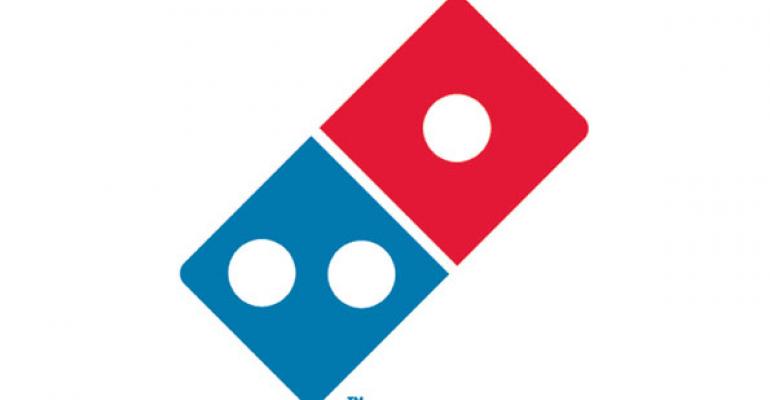Kevin Vasconi cut his career teeth in the highly competitive automotive industry, an experience that likely was seen as a plus by Domino’s Pizza Inc., which earlier this year hired him as its executive vice president and chief information officer.
Technology is a visible point of competitive differentiation in the pizza segment, where convenience in ordering and speed of service are key to sales. The Big 3 chains — Pizza Hut, Domino’s Pizza and Papa John’s Pizza — have worked to surpass online sales thresholds, integrate ordering systems with social media websites and increase mobile-app-download numbers.
RELATED
• Analyst: Domino's could turn Pizza Hut's share of pan pie into profit
• Domino's: New store design upgrades carryout, not dine-in
• More restaurant industry operations news
Prior to joining Ann Arbor, Mich.-based Domino’s, which is parent to a 4,901-unit domestic and 5,023-store international restaurant system, Vasconi was vice president of engineering and CIO at Stanley Black & Decker’s Stanley Security Solutions division.
Before that, he was senior vice president and CIO at Polk Global Automotive; senior vice president and chief technology officer of Covisint LLC, a joint venture involving Ford Motor Co., General Motors and Daimler Chrysler, among others; and chief technology officer for Auto-xchange, a joint venture between Ford and Oracle Corp.
“I am a firm believer that technology can be a competitive advantage,” Vasconi said. “Our mission at Domino’s I.T. is to be that competitive advantage for our franchise owners.”
The Domino’s executive recently fielded a trio of questions from Nation's Restaurant News.
1. How did your previous experience prepare you for Domino’s, and how have you had to change your perspective or strategies for your new industry?
The advanced technologies, the process discipline and the fast pace are elements that are very familiar to me. I also believe that strong companies have a passion for the customer, so my years at Ford Motor Co. and Stanley Black & Decker have helped prepare me for that aspect of the Domino’s culture as well.
I am fortunate that my IT team has a wealth of industry knowledge and they have been coaching and mentoring me in the QSR space. The biggest learning for me, so far, has been on the recruiting front. Most of the [job] recruits I speak with don’t understand the vital role technology plays at Domino’s, nor how technologically advanced Domino’s information technology is, whether it’s our e-commerce [online-ordering] platform, mobile applications or in logistics and supply chain. I think the vision is an easier sell to recruits if you are making automobiles or power tools.
2. What recent completed IT projects were considered grand slams by Domino’s management and franchisees, and why?
It has to be our e-commerce platform, and I include our mobile [app] offerings as part of that solution. Our e-commerce site is one of the largest in the world in terms of transaction count. Our iPhone, Android and Kindle Fire apps are all No. 1 or No. 2 in their respective category.
[This means] we can have more of a 360-degree relationship with our customers. Whether you come into one of our stores, call us on the phone, use our Internet site or one of our apps on your phone or tablet, Domino’s is there with a friendly and easy-to-use-interface.
As more of our customers move to online or mobile ordering, our e-commerce platform also provides “capacity on demand.” On those busy Friday nights when the store is slammed, the e-commerce platform can take those orders. This lightens the burden on the franchise owners to add additional customer service representatives.
3. What pending technology projects can you talk about?
While I cannot discuss any specifics, I can share with you technology trends Domino’s IT is following.
Digital Wallets & Payment: As digital payment technologies mature and begin to show up in the QSR space, we need to make sure that they are secure and scalable to a high-volume business like Domino’s. I think these technologies have a lot of promise to deliver tangible value for the consumer.
Responsive Web Design: The proliferation of smart phone and tablet platforms is great for the consumer...but it is a maintenance headache for IT departments. Responsive Web Design (RWD) is an approach to web design that provides easy reading and navigation with a minimum of resizing, panning, and scrolling. Most importantly, it provides these capabilities across a wide range of devices (from desktop computer monitors to mobile phones).
Contact Alan J. Liddle at [email protected].
Follow him on Twitter: @AJ_NRN

